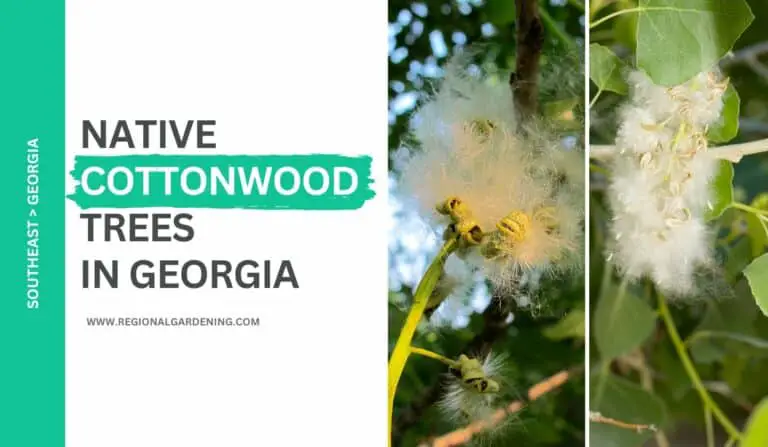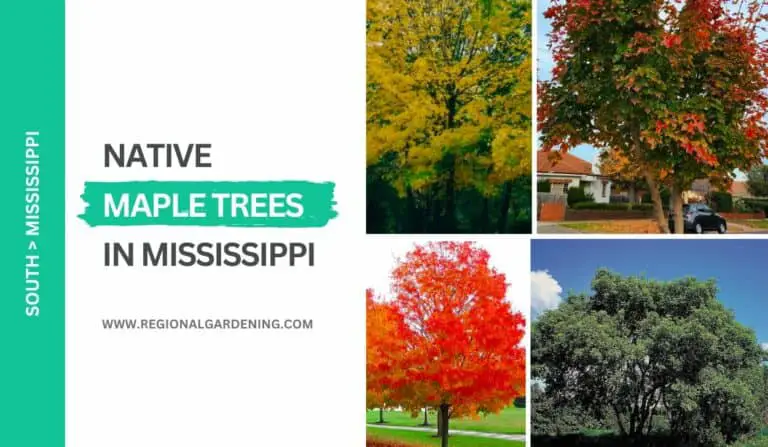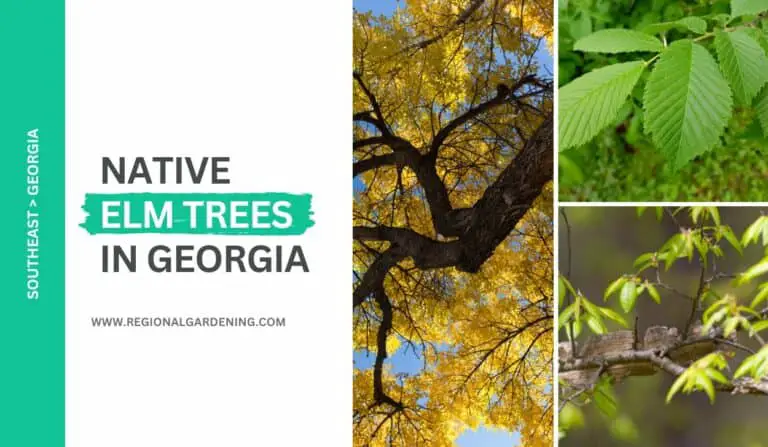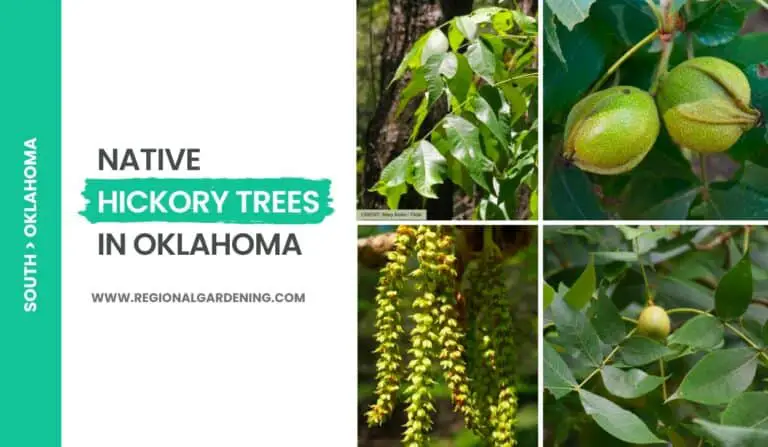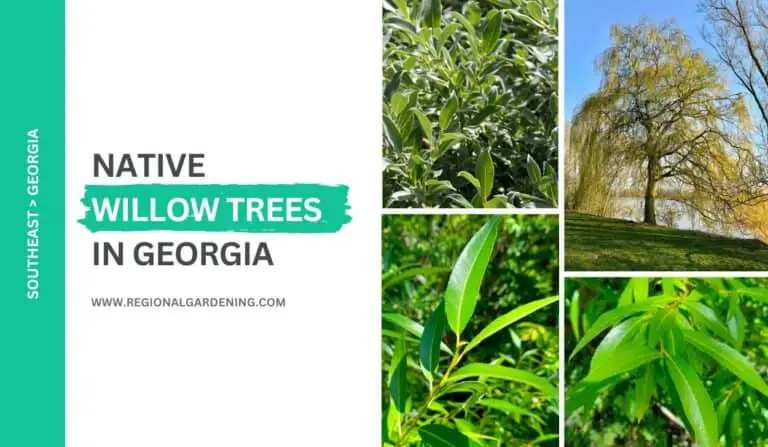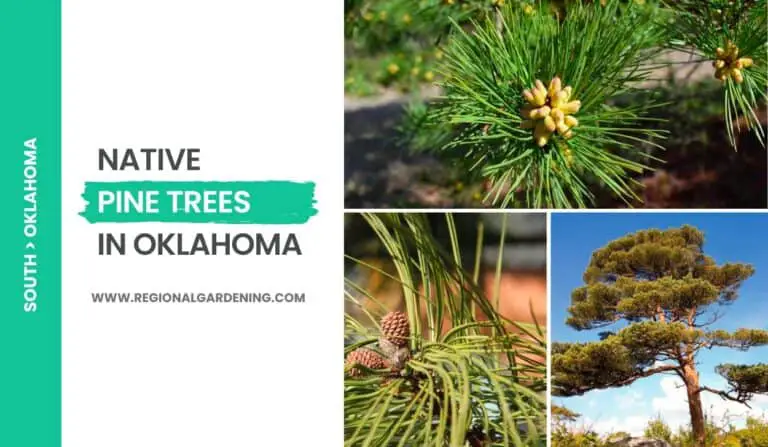5 Common Cherry Trees In Oklahoma ( Pictures & Identification)
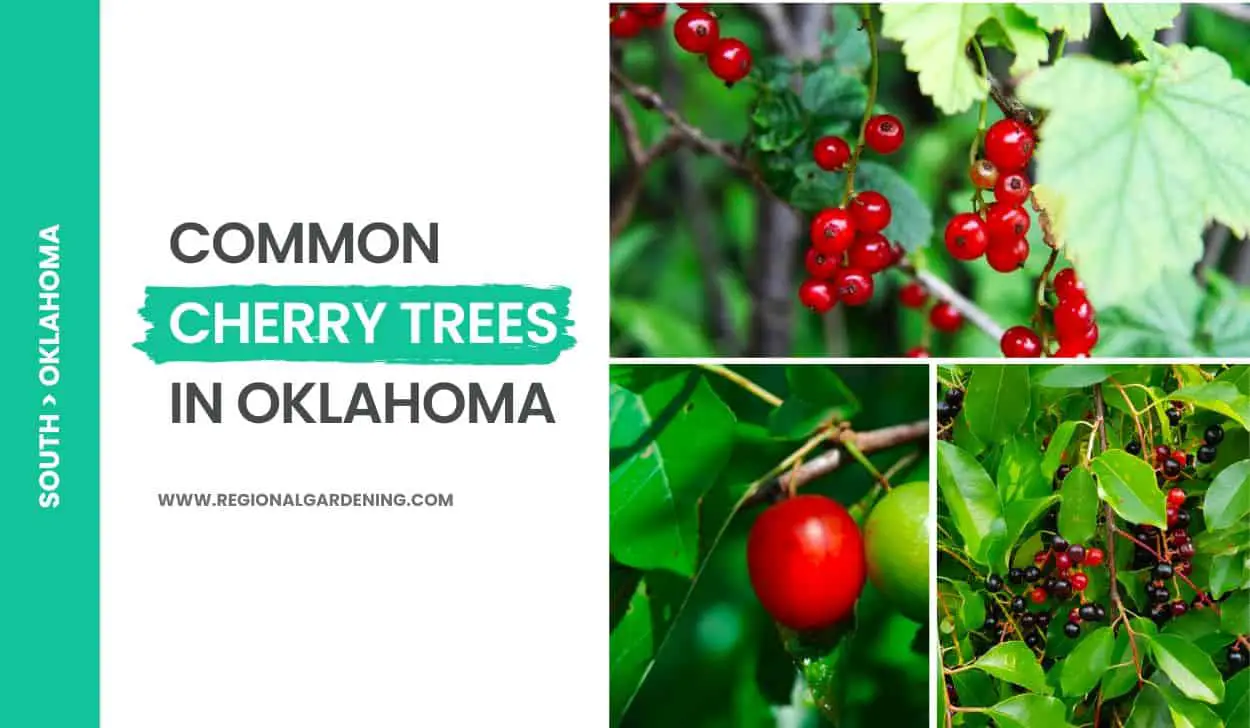
When it comes to cherry trees, most minds drift to images of Japan’s iconic sakura blossoms. However, you might be surprised to learn that Oklahoma is home to a diverse range of cherry tree varieties, each with its unique characteristics and contributions to the state’s natural tapestry.
From the hardy wild black cherry to the cultivated sweet varieties, these trees have found their place amidst Oklahoma’s landscape and history.
In this article, we’ll explore the five different types of cherry trees in Oklahoma, shedding light on their features, uses, and the beauty they bring to the Sooner State.
1. Black Cherry
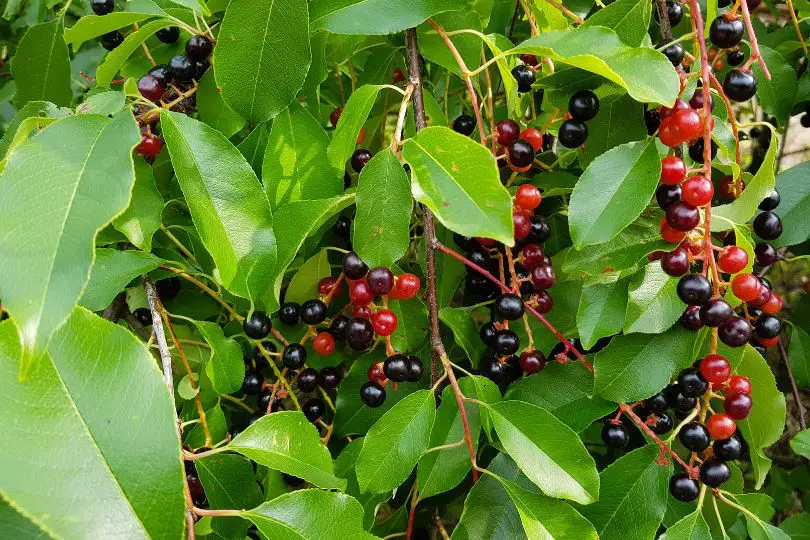
- Scientific Name: Prunus serotina Erh.
- Common Name(s): Black Cherry, Wild Cherry
- Mature Height: Up to 70 feet (21 meters)
- Native Region: Eastern and Central North America
- Flowers: White, small, and fragrant
- Fruits: Dull purplish-black berries, about the size of a pea, in long hanging clusters
- Uses: The wood of black cherry is highly prized for its luster and color, and is used for furniture, interior finish, tools, and implement handles.
Black Cherry, also known as Wild Cherry, is a medium-sized tree with a trunk diameter of 1 to 3 feet and a height of up to 70 feet. It is typically found in rich loams in its native environment of eastern and central North America.
Black cherry trees grown in the forest often have long, clean trunks with little taper, whereas open-grown trees have spreading crowns. The bark on branches and young trunks is smooth and bright reddish-brown, with short, white horizontal lines that give it a distinguishing appearance. On aged trunks, the bark becomes tough and fractured into thick, uneven plates.
Black cherry leaves are alternating, simple, and oval to lance-like in shape. Their upper surfaces are thick and lustrous, with paler undersides. Many fine incurved teeth break the edges of the leaves. Black cherry yields dull purplish-black cherries approximately the size of a pea in late summer. These berries are edible, albeit with a slightly bitter taste. They bloom in long, dangling bunches that provide visual appeal to the tree.
The reddish-brown color and gloss of black cherry wood make it extremely valuable. It is moderately hefty, hard, and powerful, with golden sapwood. When seasoned, the wood is also fine-grained and does not warp or break.
It is utilized for a variety of uses due to its great features, including furniture, interior finishing, tools, and implement handles. Black cherry lumber has the greatest unit value of any hardwood in the eastern United States, save from black walnut.
Black cherry may offer beauty and diversity to Oklahoma landscapes. It is an appealing ornamental tree due to its upright growth style and spreading crown. It can grow in a variety of soil types, including loam, making it ideal for the state’s diverse landscapes.
The fruits of the black cherry are also known to attract birds and other wildlife. Although it is a sturdy tree that can handle Oklahoma’s climate, it may require some shelter from strong winds and harsh temperatures, particularly when young.
2. Indian Cherry
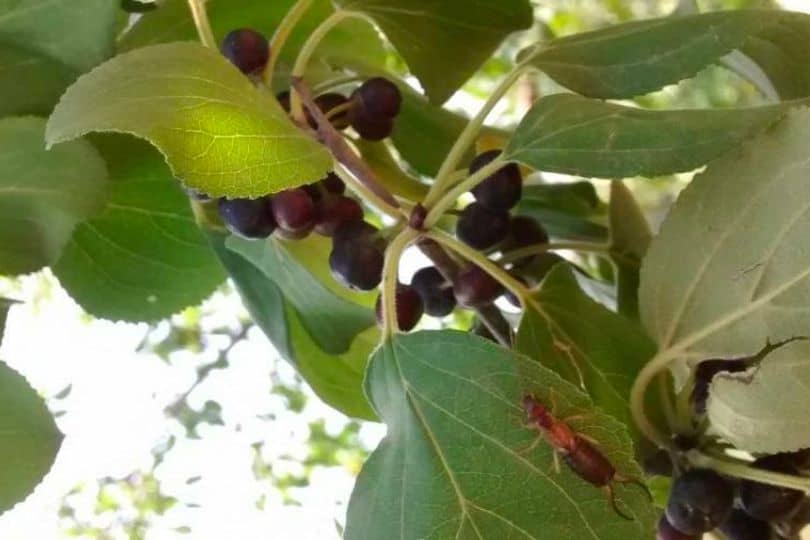
- Scientific Name: Rhamnus caroliniana Walt.
- Common Name(s): Indian Cherry
- Mature Height: Small tree or large shrub
- Native Region: Southern United States, particularly in the region where Oklahoma, Arkansas, and Texas meet
- Flowers: Very small, in clusters, appearing in April or May, with floral parts in 5’s
- Fruits: Round, about one-third inch in diameter, black with a thin sweet flesh enclosing 2 to 4 firm or hard seeds
- Uses: Dyes from the fruit and bark yield yellow or green colors, primarily used for dyeing purposes.
The Indian cherry, formally known as Rhamnus caroliniana Walt., belongs to the Buckthorn family and, despite the name “cherry,” it is not a real cherry. This species is mostly found in the southern United States, with the highest populations located around the borders of Oklahoma, Arkansas, and Texas.
It grows on stream bottoms and along stream banks, eventually developing into a small tree or a huge shrub.
The Indian cherry has various distinguishing physical traits. Its bark is unpleasant and can irritate the skin. The leaves are pointy and oblong to elliptical, measuring 2 to 5 inches long and 1 to 1.5 inches wide. They have fine tooth-like serrations or wavy borders on the upper side and a yellowish to dark green tint on the underside. The leaves turn golden in fall, bringing a splash of color to the scene.
When the leaves are completely grown in April or May, the Indian cherry produces little flowers in clusters. The floral components of these flowers are grouped in groups of five. However, when compared to other flowering trees, the Indian cherry blossoms are not exceptionally striking.
The Indian cherry produces small, spherical berries that measure about one-third of an inch in diameter. These blackberries have a thin sweet flesh enclosing 2 to 4 firm or hard seeds. They ripen in September and can stay on the tree for months.
Although the fruits are not normally ingested by humans, they are notable for their yellow or green colors obtained from both the fruit and the bark. These dyes are extensively used for coloring, notably in textile dyeing.
The Indian cherry may be a charming addition to Oklahoma settings, giving shade and attracting wildlife with its fruits. It thrives in damp soil conditions and is well-suited for bottomlands and stream banks.
Because it is not a genuine cherry, it does not have the same culinary applications. Instead, the natural colors derived from its fruits and bark are its principal applications. It is vital to use caution when handling this tree due to its aromatic bark.
3. Munson Cherry
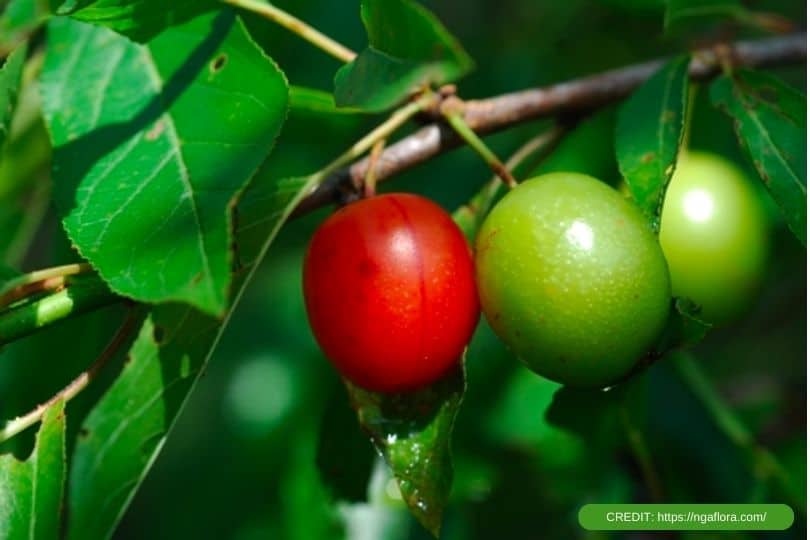
- Scientific Name: Prunus munsoniana
- Common Name(s): Munson cherry, sand cherry
- Mature Height: 10-20 feet (3-6 meters)
- Native Region: North America
- Flowers: White blossoms with pink undertones
- Fruits: Small, red to purple cherries
- Uses: The Munson cherry is often used as an ornamental tree in landscapes due to its showy flowers and attractive fall foliage. The fruits can be eaten fresh or used in jams and preserves. The tree is also valued for erosion control and as a pollinator for other fruit-bearing plants.
Prunus munsoniana, often known as the Munson cherry or sand cherry, is a tiny deciduous tree that grows to be 10-20 feet (3-6 meters) tall when mature. It is native to North America and is widely found in Oklahoma landscapes where it is valued for its decorative qualities.
In the spring, the Munson cherry produces lovely white blooms with pink undertones, giving a spectacular display of color. This is followed by little, red to purple cherries that mature in the summer. While the fruits are not as large or as juicy as cultivated cherry, they can be eaten fresh or utilized in culinary applications like jams and preserves.
Because of its spreading root structure, the Munson cherry is valued for erosion prevention in addition to its aesthetic value. It can aid in the stabilization of slopes and the prevention of soil erosion in landscaping projects. Furthermore, the tree is a great pollinator for other fruit-bearing plants, making it useful in orchards and gardens.
Munson cherries flourish in full sun to light shade and well-drained soil in Oklahoma landscapes. It may grow in several soil types, including sandy and loamy soil. The tree has a moderate drought tolerance but benefits from regular irrigation, especially during dry spells. Pruning is not usually necessary, but any dead or broken branches should be removed to keep the tree healthy and attractive.
4. Mexican Cherry
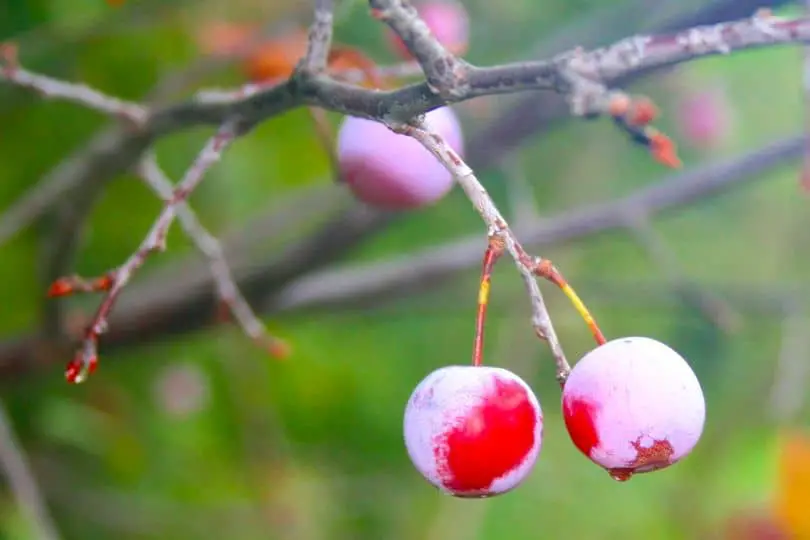
- Scientific Name: Prunus Mexicana Wats.
- Common Name(s): Mexican Plum
- Mature Height: 15-25 feet (4.5-7.6 meters)
- Native Region: North America, particularly in Texas, Oklahoma, and Mexico
- Flowers: Fragrant white flowers in early spring
- Fruits: Small, juicy plums that turn from green to red when ripe
- Uses: Edible fruits for humans and wildlife, ornamental tree for landscapes, and as a rootstock for grafting other plum varieties
The Prunus mexicana, sometimes known as the Mexican Plum, is a deciduous tree that can grow to be 15 to 25 feet tall when mature. It is native to North America, with populations in Texas, Oklahoma, and Mexico. This tree is quite flexible, thriving in a variety of soil types such as clay, loam, and sandy soils.
The Mexican Plum tree produces an abundance of fragrant white blossoms in early spring, adding beauty and fragrance to the landscape. These blossoms attract pollinators like bees and butterflies, which help the tree reproduce. Following pollination, the tree produces little plums that begin green and turn red as they ripen. These plums are luscious and delicious for both humans and wildlife.
Aside from its edible fruits, the Mexican Plum is a popular ornamental tree in landscaping. Its extremely beautiful white blooms in the spring and brilliant red plums in the summer add to the overall beauty of any garden or yard.
Furthermore, the Mexican Plum is frequently used as a rootstock for grafting other plum varieties, offering a strong and dependable foundation for grafting experiments.
It is critical to consider the special maintenance requirements of a Mexican Plum tree when planting it in Oklahoma landscapes. This tree enjoys full sun but may take slight shade. It also needs well-drained soil and consistent watering, especially during the establishment phase. Pruning should be done during the dormant season to keep the shape of the tree and to remove any dead or diseased limbs.
5. Choke Cherry
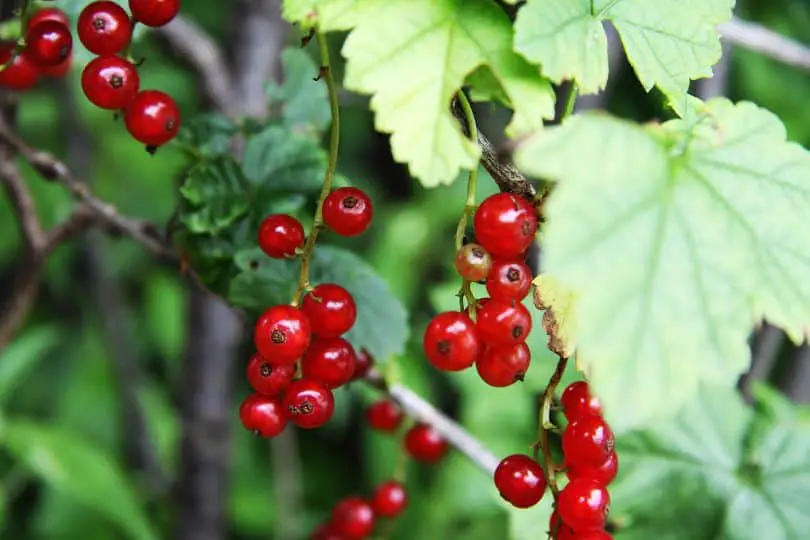
- Scientific Name: Prunus virginiana
- Common Name(s): Chokecherry
- Mature Height: 10-30 feet (3-9 meters)
- Native Region: North America
- Flowers: Clusters of small white flowers
- Fruits: Dark red to blackberries
- Uses: The berries can be used to make jams, jellies, and pies. The tree also provides habitat and food for wildlife.
Chokecherry is a native North American deciduous tree. It can reach a height of 10-30 feet and a spread of 10-20 feet. The crown of the tree is rounded, and the bark is dark gray. It has oval-shaped dark green leaves that turn yellow to crimson in the fall.
Chokecherry blooms in clusters of little white blossoms in the spring. Bees and butterflies rely heavily on these flowers for nectar. Berries that are dark red to black and ripen in late summer follow the blossoms. While the berries are edible, eating them fresh is highly sour and astringent. They can, however, be used to make delectable jams, jellies, and pies.
Chokecherry is well adapted to Oklahoma’s climate and can grow in a variety of soil types. It prefers full sun but may take partial shade as well. Once established, the tree is drought-tolerant, making it a low-maintenance option for Oklahoma landscapes. Chokecherry should be pruned in late winter to early spring to retain shape and remove any dead or broken branches.
Chokecherry, in addition to being a lovely landscaping tree, provides essential habitat and food for wildlife. Birds love the berries and will often swarm to the tree in late summer to eat on them. Several bird species use the tree for nesting and protection.
If you want to plant Chokecherry in your Oklahoma landscape, keep in mind that it can spread via suckering. Consider planting it in a restricted location or frequently removing any suckers that develop to prevent unwanted spread.
Similar Articles
- Native Pine Trees In Oklahoma
- Native Maple Trees In Oklahoma
- Native Elm Trees In Oklahoma
- Common Palm Trees In Oklahoma
- Native Hickory Trees In Oklahoma
- Native Oak Trees In Oklahoma
- Native Cedar Trees In Oklahoma
- Native Ash Trees In Oklahoma
- Common Birch Trees In Oklahoma
- Native Cypress Trees In Oklahoma
Cherry Trees In Oklahoma – Sources
The Regional Gardening team makes sure that the information in our articles is accurate by only using sources that are known to be trustworthy. Some of these sources are peer-reviewed journals from government agencies, well-known universities, and scientific research organizations.
- Forest Tree Species, Oklahoma State University Extension
- Oklahoma Trees for Gardening Resource, Oklahoma State University Extension
- Oklahoma Native Trees by County, Oklahoma Forestry Services
- Native Plant Guide, Oklahoma County Conservation District
- Plants, Seeds & Landscapes, Oklahoma Native Plant Society
- Plant Selections for Oklahoma, Oklahoma State University Extension


